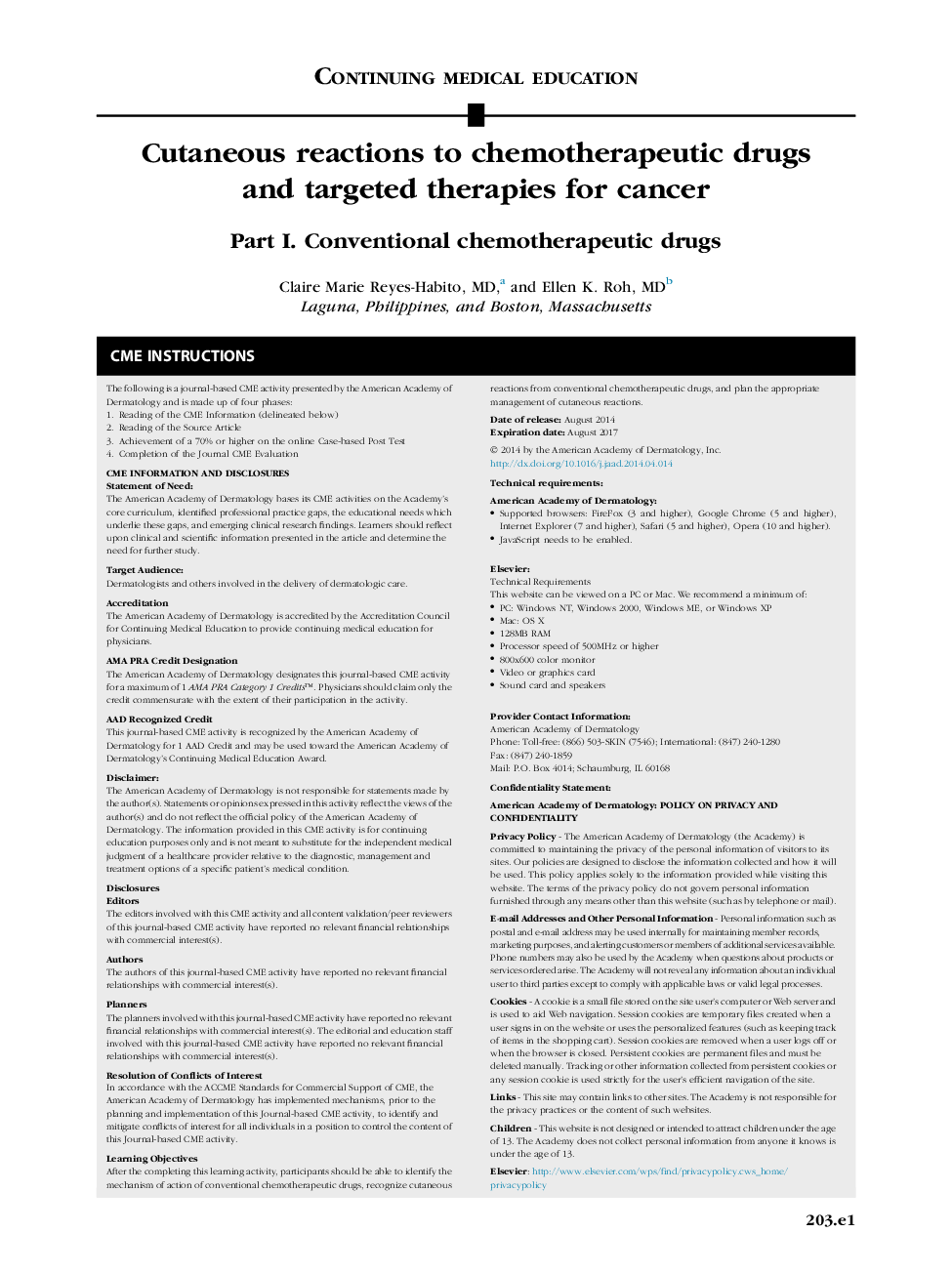| Article ID | Journal | Published Year | Pages | File Type |
|---|---|---|---|---|
| 6071256 | Journal of the American Academy of Dermatology | 2014 | 12 Pages |
Abstract
Conventional chemotherapy continues to be an important part of cancer management, but may cause various cutaneous reactions because it disturbs specific cell cycle phases. The alkylating agents cyclophosphamide, ifosfamide, and thiotepa can produce hyperpigmentation, while hypersensitivity reactions can be seen with platinum alkylating agents. Antimetabolites vary in reactions from exanthematous to bullous skin lesions. 5-fluorouracil and its derivatives and liposomal doxorubicin and daunorubicin are characteristically known to cause hand-foot syndrome, while bleomycin can cause fibrosis and flagellate dermatitis. Several hypersensitivity reactions may also occur from mitotic inhibitors and topoisomerase inhibitors. These different characteristic presentations are important to dermatologists in identifying the correct diagnosis and management for the cancer patient.
Keywords
Related Topics
Health Sciences
Medicine and Dentistry
Dermatology
Authors
Claire Marie MD, Ellen K. MD,
